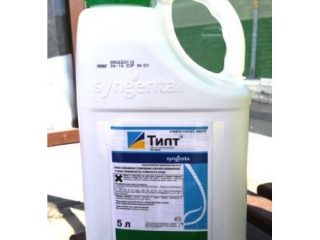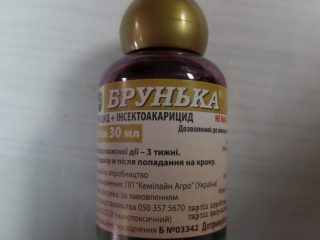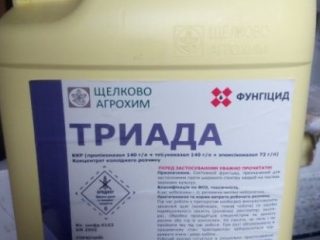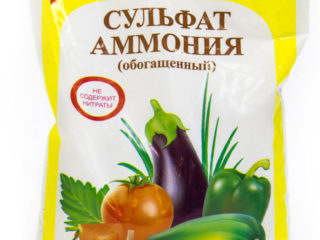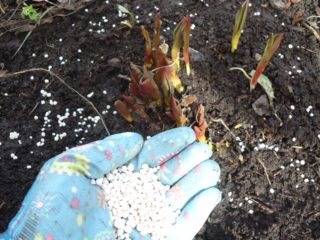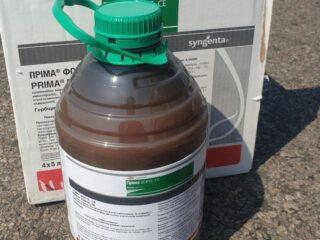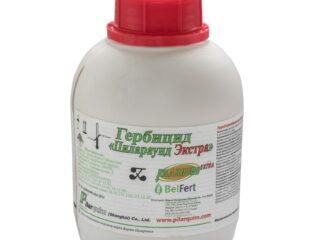Content
Phytosporin for seedlings is used to prevent and treat various bacterial and fungal diseases. This is an effective fungicide, the active component of which is a bacterial culture. Unlike chemicals, it can be used at any stage of the growing season, including during fruiting.
Composition and principle of action
"Fitosporin-M" is a biological group fungicide. It contains a bacterial culture of bacilli Subtilis 26 D. These are beneficial microorganisms that destroy fungi and other pathogens. Unlike chemical preparations that contain synthetic substances, the product has a “mild” effect and is much safer for seedlings and adult plants.
Used to protect against pathogenic microflora of various origins:
- tracheomycosis;
- bacteriosis;
- Phomasis;
- downy mildew;
- bacterial cancer;
- different types of rot (dry, wet, fruit, white, gray and others);
- snowy, pink mold;
- rust;
- white spotting, rusty;
- powdery mildew, true, American;
- rhizoctoniasis.
Fitosporin is used for soil treatment, as well as for seedlings. With its help, many cultures are protected:
- tomatoes and cabbage of different varieties;
- garden strawberries;
- bulbous;
- trees and shrubs;
- cucumbers
The principle of action of Fitosporin for soil for seedlings is quite simple. When the bacteria included in the fungicide enter the soil with water, they are immediately activated. They penetrate the soil and destroy pathogenic microorganisms, including fungi. The spores are also destroyed, the soil is disinfected, which makes it possible to prevent the spread of infection. Therefore, it is recommended to water seedlings with Fitosporin not only for treatment, but also for prevention purposes.
Often the product contains not only bacteria, but also additives, for example, chalk or “Gumi”. This is the best option, since additional components stimulate plant immunity and increase their resistance to various pathologies. The composition may also contain an NPK complex - in this case, the fungicide serves for seedlings and as a fertilizer.
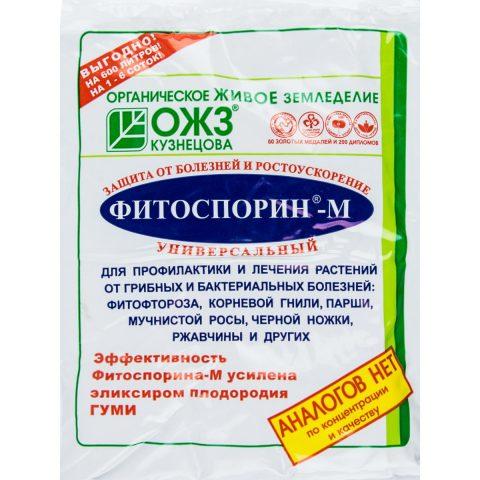
The drug helps in the treatment of most infectious diseases
Release forms
Fitosporin for disinfecting soil for seedlings is produced in different forms. They have the same composition and operating principle; they differ only in their condition:
- powder;
- water-based emulsion;
- paste.
The powder can be used to treat and prevent fungal and bacterial infections of seedlings. The main advantage of this form is the complete preservation of the properties of the drug even after opening. To obtain a solution, the powder is diluted about an hour before spraying. It is better to do this in the evening, the weather should be without rain.
Paste is another convenient form of fungicide for seedlings.It dissolves well in water, enriches the soil not only with beneficial bacteria, but also with nutrients. Unlike powder, paste contains a small proportion of water, so it dissipates much faster. It is used for the treatment and prevention of diseases, and also as an immunomodulatory agent.
Fitosporin emulsion for seedlings is a concentrated liquid water-based solution. Used for spraying seedlings on leaves. It should be measured drop by drop without violating the dosage, since the concentration is quite high.
Advantages and disadvantages
A review of the drug Fitosporin for seedlings shows that it has certain advantages. The obvious advantages include:
- safe for plants and people, little dangerous for bees;
- works in a wide temperature range from -5 to +40;
- can be used at any stage of the growing season;
- fast action;
- wide spectrum – you can fight most known diseases;
- effective for both treatment and prevention.
But Fitosporin also has disadvantages. Among them are:
- in the bright sun, bacteria die, so you need to treat in the evening;
- It is necessary to do several treatments, since after one spraying the effectiveness is low.
How to dilute Fitosporin for watering seedlings
Fitosporin should be diluted for seedlings according to the instructions. It all depends on the release form, the required concentration and volume. In general, you need to do this:
- Wear gloves.
- Measure on the scale the required amount of the drug (powder, paste) or the volume of emulsion (you can use a measuring cup).
- Dissolve in a small amount of water.
- Bring to a total volume of, for example, 2 liters.
- Start watering and processing seedlings.
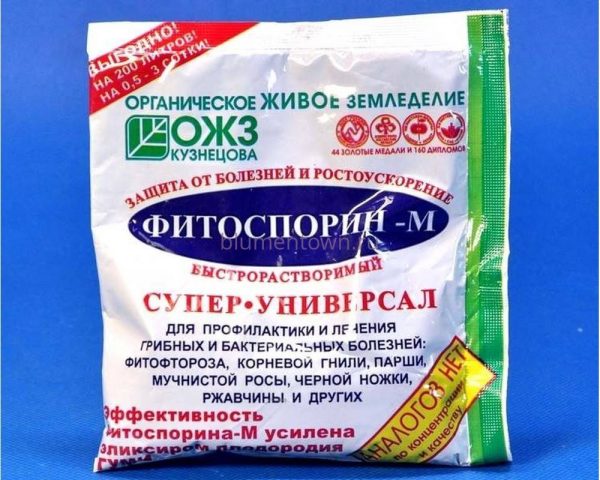
Fitosporin is diluted in water and after 1-2 hours treatment begins
Powder
The powder must be diluted in water 1.5-2 hours before the intended treatment. It is important to understand that 1 teaspoon contains 3-3.5 g of product. But for a more accurate measurement, you can use a kitchen scale. The dosage of the powder depends on which crop is being treated.
For example, for cabbage seedlings dilute 3 g in 1 liter. Before transplanting, seedlings are placed in this solution of Fitosporin and then transferred to the garden bed. You can also treat tomato seedlings. Take 30 g of powder, dilute it in 10 liters and place the seedlings before transplanting into open ground.
Paste
Many summer residents consider paste to be the most convenient form of Fitosporin for seedlings and for soil treatment. Preparing the solution is quite simple - to do this, you need to dilute the paste with water in a ratio of 1:2. If you take 100 g of raw material, you need to add 200 ml of water to it.
Next, the resulting concentrate must be diluted again. How much Fitosporin to take for seedlings depends on the crop being processed:
- When treating roots and bulbs by spraying, you will need 3 tbsp. l. per glass of water.
- To soak the seeds you will need 2 drops per 100 ml.
- To grow cuttings, dissolve only 4 drops in a glass of water.
- Treatment of vegetable seedlings with Fitosporin is done by spraying. Add 15 g of powder per 10 liters.
Emulsion
There is another form - an aqueous concentrated emulsion. It is also used for processing seedlings and watering the soil.To use Fitosporin correctly, you need to dilute it in a ratio of 10 drops per 100 ml. To treat already infected plants, the concentration should be increased twice, i.e. 20 drops for the same 100 ml. The ratio does not depend on the type of crop being processed - the instructions are the same.
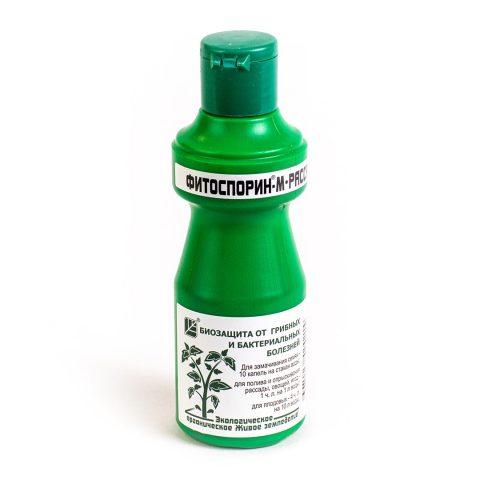
The emulsion is diluted in a ratio of 10 drops per 100 ml of water
How to treat seedlings with Fitosporin
The drug is used in different ways:
- pre-planting soil treatment;
- seed dressing;
- watering at the root;
- spraying seedlings and adult plants (by leaves).
The main methods of use for different crops are described below.
cucumbers
For cucumbers, Fitosporin is used at the stage of pre-sowing freezing of seeds, as well as for spraying seedlings. You can also treat adult plants no more than three times per season. Prepare a solution of 30 g per bucket of water.
Tomatoes and peppers
The instructions for use also tell you how to use Fitosporin M for seedlings of peppers and tomatoes. In this case, prepare a solution of a standard concentration of 30 g per 10 l. Used for treating the roots of seedlings (soaking), as well as for watering after transplantation. For spraying, prepare a liquid of 5 g per 10 l.
Cabbage
Phytosporin can also be used for cabbage seedlings. In this case, the instructions are exactly the same as for tomatoes. The solution is made for immersing the roots and watering.
Bulbous
Bulbous crops (vegetables and flowers) are treated with Fitosporin once. To do this, the bulbs are treated before planting and growing seedlings. Use paste in the amount of 3 tbsp. l. for 1 glass of water (200 ml).
Strawberry
Fitosporin should also be used before planting strawberry seedlings. It is necessary to water the soil the day before, especially if the spring is rainy.Prepare a powder solution of 5 g per 10 liters. This is a good measure to prevent various types of rot and other fungal infections.
For trees and shrubs
Trees and shrubs are treated with Fitosporin when leaves appear, and then again before fruiting begins. For fruit bushes, use a solution of a standard concentration of 30 g per 10 l. This helps prevent powdery mildew, scab and rust. For trees, a paste-based solution is used; spraying is carried out during the swelling of the buds, at the flowering stage and after it.
Compatibility with other drugs
Fungicide Fitosporin can be combined with various drugs, including against fungi and insects. The most effective of them:
- "Aktara";
- "Decis";
- "Fitoverm";
- "Quadris";
- "Fundazol";
- "Strobe."
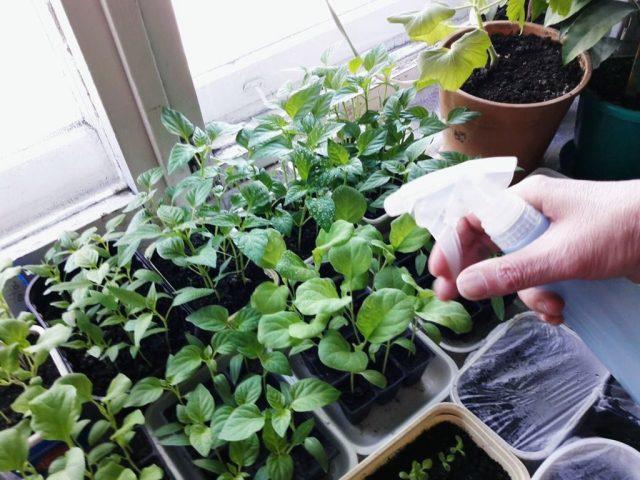
You can treat seedlings with a mixture of Fitosporin and other agents.
The drug can also be used with fertilizers and growth stimulants, for example, with Zircon, Epin, Plantafol. The only exception is products that have an alkaline reaction. Before mixing, you need to carefully study the composition and instructions.
Precautionary measures
Fitosporin solution for seedlings is safe not only for plants, but also for humans. It belongs to toxicity class 4 (slightly dangerous) and class 3 for bees (moderately dangerous). During the preparation of the solution and directly during processing, you do not need to use special clothing. But if you are allergic to certain drugs, it is recommended to work with gloves, avoiding direct contact with liquid or paste or powder.
Otherwise, when using Fitosporin for cultivating land and seedlings, you should follow general safety precautions:
- Do not eat or drink while spraying or watering.
- Exclude access to children and pets.
- If the seedling solution gets on your skin, wash with soap and water.
- If liquid splashes into the eyes, they are treated under low-pressure running water.
- If ingested, take several tablets of activated carbon and drink water.
Conclusion
Phytosporin for seedlings is used in the form of a solution. It can be prepared on the basis of an emulsion, powder or paste. It is recommended to carefully observe the dosage and do no more than three sprays per season. You need to work in the evening, in dry weather without rain or wind.
